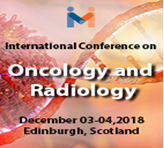Topical insulin in the gel formulation vs. cream formulation in the tissue repair of hyperglycemic mice
Topical insulin is an option for the treatment of wounds in hyperglycemic animals with delayed tissue repair. Although there is evidence on the
impact of insulin on wound healing, further studies are needed to evaluate the best insulincontaining formulation in tissue repair.
Objective: To investigate the cream formulation vs. the gel formulation in wounds of hyperglycemic animals.
Method: Diabetes was induced with five consecutive daily doses of streptozotocin (60mg / kg) intraperitoneally. The wound was performed in
the dorsal region of the animals with the aid of a mold with an area of 1cm2. The study was composed of group 1: wounds treated with insulin
cream and group 2: animals treated with insulin gel. Wounds were treated daily, photographed and extracted for further analysis. Wound areas
were analyzed using ImageJ software. The groups were compared by means of the t-Student test; the level of significance adopted was p <0.05.
Results: Microscopically both groups were very similar in relation to inflammatory infiltrate, presence of fibroblasts and vessels. There was a higher
rate of reepithelialization with treatment in the gel formulation. We also observed increased expression of the protein Ki67 and the TGFβ1 on day
8 in the gel formulation when compared to the cream. On the 14th day, the findings are similar in both groups.
Conclusion: Topical insulin favors tissue repair in the cream or gel formulation. It modulates the inflammatory phase, the cellular proliferation
through KI67 and favors the proliferative phase through the expression of TGFβ1 evaluated by immunohistochemistry.
 Spanish
Spanish  Chinese
Chinese  Russian
Russian  German
German  French
French  Japanese
Japanese  Portuguese
Portuguese  Hindi
Hindi 



